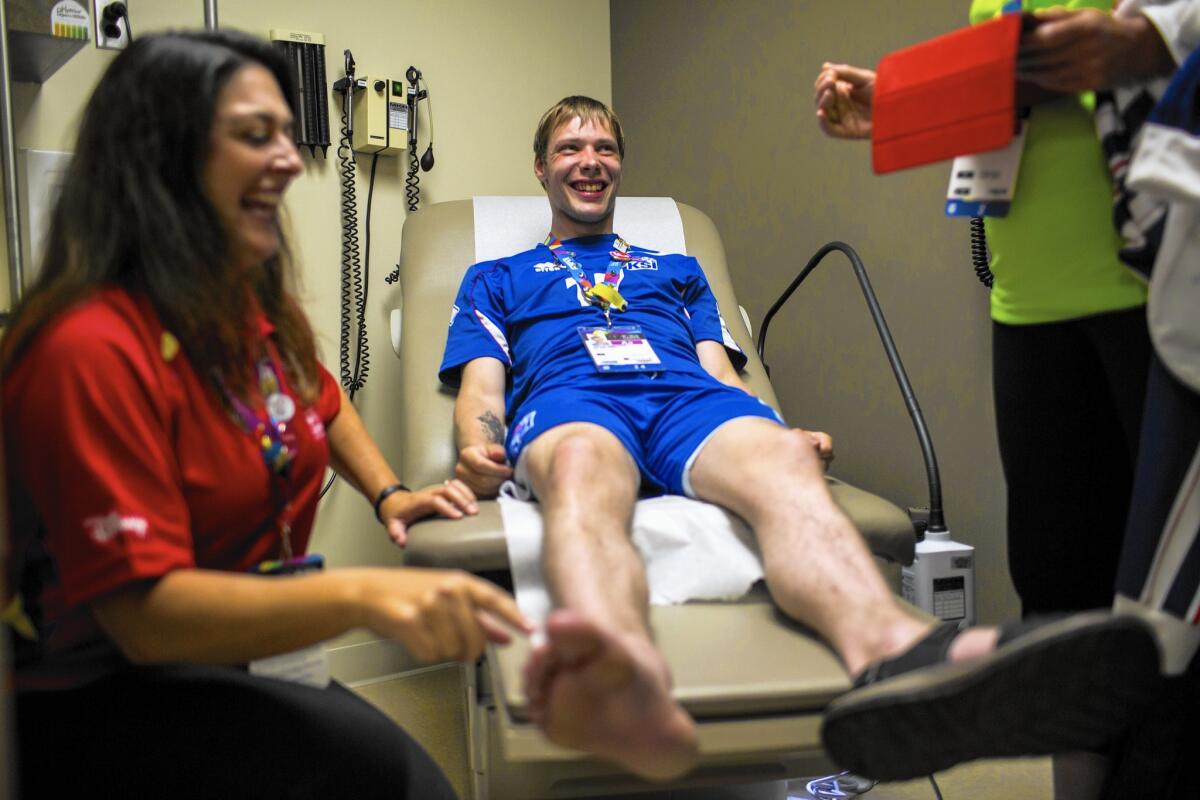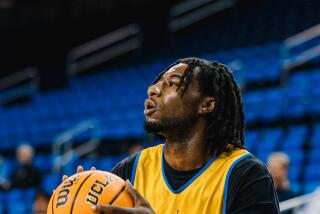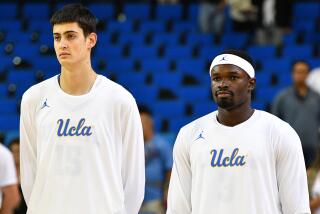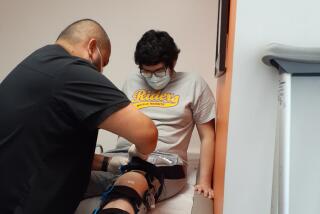Volunteer clinic provides care, supplies to Special Olympics athletes

An Icelandic soccer player rested his swollen ankle in a small clinic room on the UCLA campus and waited for his nurse to deliver the verdict.
If his foot was broken, he’d sit sidelined as his team battled for victory in the Special Olympics World Games.
But if the bone was intact, he could keep dribbling and passing with teammates who had practiced together for a year in anticipation of this week’s competition in Los Angeles.
UCLA donated space for the free clinic and the university-affiliated health system provided volunteers from the emergency room, medical supplies and medications.
The clinic serves more than 3,000 athletes, coaches and team delegates staying in campus dorms.
The injured soccer player, Jakob Larusson, 25, said his favorite part of the games was playing on the field — an aspect of his trip that was now in jeopardy because he twisted his foot in the last five minutes of a game Wednesday morning.
“The saddest part is when we have to tell athletes they aren’t cleared to play,” said Kerry Gold, a nurse volunteering at the clinic.
Doctors and nurses, dressed in uniforms of bright red to echo one of the World Games colors, see an average of 30 patients each day, with symptoms such as knee pain, signs of flu and chronic illnesses that go untreated in some athletes’ home nations. Many athletes have disabilities coupled with chronic illnesses, including heart conditions and diabetes, clinic director Mark Mayes said. Several patients received care for chronic illnesses, got prescriptions filled and even obtained hearing aids or glasses if theirs were broken or lost in the games.
Although the clinic is staffed with emergency room doctors and nurses, the atmosphere is nothing like the ER, Gold said.
“It’s a different world from what we’re used to,” she said. “Everyone is so happy. If I had to come up with a theme for the clinic, it would be ‘hugs and high fives.’ ”
Still, patients hoping to be cleared to play wait anxiously in the clinic rooms. Entire teams sometimes fill the waiting area to support their injured teammates, Gold said. And if a nurse delivers the news that a player won’t be returning to their sport for the rest of the week, tears ensue.
But Gold said the majority of patients are cleared within half an hour of entering the clinic.
Communicating either a good or bad prognosis with the athletes from different parts of the world can be tough, said Lynne McCullough, the medical director of the Ronald Reagan UCLA emergency medical department and the clinic.
She uses an app called Canopy to tell patients who don’t speak English about their condition. A doctor can select a message about a specific injury, and the physician’s smartphone will spout out the message in the patient’s mother tongue. When the app can’t translate perfectly, delegates and translators from the school help inform athletes.
Gold and McCullough sat behind a desk in the clinic during a lull between patients. Their name badges hung from lanyards decorated with pins and buttons from athletes who passed through the clinic. Together, they rattled off a list of countries they’d seen represented by their patients: San Marino, Portugal, Uruguay, France, Finland, Haiti, South Korea, Mexico, Russia, Japan and others.
Larusson fiddled with his own lanyard decorated with pins from around the world while he waited quietly for the X-ray. His right ankle was swollen, but the pain was not terrible, he said.
After a short “road test” that showed Larusson could put weight on his right foot, McCullough gave him the good news:
The X-ray didn’t show a crack in any bones, and if the swelling went down and he felt confident enough with his ankle, Larusson could play in the rest of the week’s games.
Twitter: @katemshepherd
ALSO:
El Niño pushing high temps, rain into California in coming days
Sen. Dianne Feinstein introduces $1.3-billion drought-relief bill
Devastating floods might be more common than we thought
More to Read
Sign up for Essential California
The most important California stories and recommendations in your inbox every morning.
You may occasionally receive promotional content from the Los Angeles Times.









